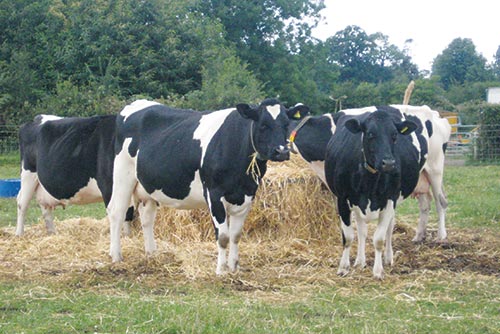5 top tips for dairy cow transition management

Five key areas to pay attention to in a dairy cow’s transition period to maximise yields, fertility and cow health.
Correct management of the transition period is crucial to increase milk yields, fertility and profitability in the following lactation.
And although it makes up just 20% of the production cycle, it can have a dramatic effect on the other 80%.
However, as Huw McConochie, senior dairy specialist of the Wynnstay Group, explains, the transition period is where most things can go wrong.
“The chance of metabolic disease affecting fertility can increase. Both this and over-fat cows at calving can lead to culls within the first 60 days of lactation.”
Dr McConochie sets out the five key aspects of transition cow management:
1. Feed Space
Cows need 60-90cm of feed space to maintain their dry matter (DM) intake to meet energy demand. When they don’t eat enough they go into a negative energy balance pre-calving or mobilise their fat reserves, resulting in a loss of condition and metabolic disease.
2. Living space
Most foot problems occurring eight weeks post-calving are as a result of reduced lying time in the close-up period (three weeks before calving), so living space should focus on availability and comfort.
In terms of bedding, sand beds are excellent at withstanding the challenge of pathogens, whereas straw beds must be bedded up regularly and kept clean. Good hygiene after drying off is vital as this is when a lot of mastitis cases are present.
Dry cows require an 8:16 ratio of light to dark. This leads to improved mammary development and better-quality colostrum.
3. Cow groupings
Minimise moving cows around and mixing them up as this causes social instability, stress and reduced DM intakes.
Dominant and subordinate animals may focus more on bullying or being bullied to secure their place in the social hierarchy and less time eating. This can lead to a negative energy balance, a breakdown in body fat and sub-clinical ketosis.
Avoid moving cows to calving areas more than 48 hours in advance as separation from the group causes stress. The calving area itself must have ample water access, feed and trough space.
4. Nutrition
Diet in the close-up period should contain 9.5-10MJ of ME/kg DM, 14% crude protein and low dietary cation-anion balance (DCAB) levels.
Cows need a high-fibre diet based on low mineral forages including straw and cereal silages as these have lower DCAB levels.
Low-DCAB diets are beneficial as they stimulate the cow’s body to mobilise calcium from her bones, so when she calves there is sufficient calcium circulating to compensate for the added demand, helping to prevent milk fever.
5. Post calving
Continue to pay attention to feed space, living space and groupings in the first three weeks after calving.
At calving, DM intakes are only 60-75%, so farmers should ease fresh cows into concentrates slowly by withholding from rapid increases in the parlour. An overload of concentrates will result in acidosis.
It is safer for cows to fill up on a total mixed ration than a load of concentrates as long as the TMR is properly mixed and consistent so they can’t sort through the forage and pick out the concentrates. After two to three weeks farmers can safely start to increase concentrates.
